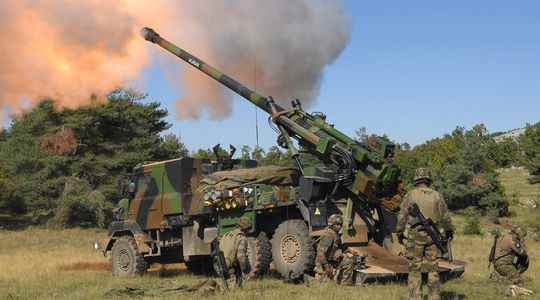Change of gear in Western military aid to Ukraine. Following a meeting on Tuesday April 26 in Germany, the United States and some forty allied countries announced that they will now meet every month to examine how to strengthen kyiv’s military capabilities. The objective: “move heaven and earth” to make Ukraine win, summarized the American Minister of Defense, Lloyd Austin. A little earlier in the day, Berlin had authorized the delivery to kyiv of about fifty anti-aircraft tanks of the “Cheetah” type, operating a major reversal in its support policy – hitherto very cautious. The Netherlands have also confirmed supplying Panzerhaubitze 2000 armored howitzers capable of hitting targets 50 kilometers away.
Similar announcements have been cascading in recent days. Emmanuel Macron had thus reported, on Friday April 22, the sending to Ukraine of Milan anti-tank missiles as well as 12 Caesar guns. “It is an armored truck equipped with a very powerful 155 mm gun, capable of firing six shells in one minute, at more than 40 kilometers, details General Dominique Trinquand, military expert and former head of the mission. to the UN. They are very mobile and could prove extremely effective against Russian artillery and armour.” The United States had also taken the plunge a few days earlier, by releasing a new tranche of aid amounting to 800 million dollars, including, among other things, 72 Howitzer howitzers, as well as spare parts for the fighter planes of Ukrainian Air Force.
No more red line
Contrary to what was still the case during the first weeks of the conflict, the delivery of heavy weapons to Ukraine no longer appears as a red line. “Westerners have reopened the door gradually after noticing that the military aid provided to Ukraine did not lead, at this stage, to a major escalation on the part of Russia, underlines Mathieu Boulègue, researcher specializing in Eurasia at Chatham House, a British think tank. We therefore allow ourselves today to go further, but while taking care not to be considered as co-belligerents.” The Czech Republic was the first country to get the ball rolling in early April, announcing the delivery of Soviet-designed T-72M tanks to Ukraine. Poland, then the United Kingdom quickly took over.
At the same time, the abuses committed by the Russian army – as in Boutcha or Kramatorsk – and the accusations of genocide launched by Joe Biden and several other leaders have legitimized in Western public opinion the reinforcement of military aid for kyiv. According to a Reuters/Ipsos poll conducted on Tuesday, 73% of Americans support arms deliveries to Ukraine, the highest level recorded since the start of the conflict. Before the discovery of the first massacres of civilians north of kyiv, this figure was 68%.
Annoyance of Moscow
It remains to determine the consequences of these massive deliveries on the front. “They can help Ukraine limit, or even prevent, the conquest of new territories by Russia in the East, points out Benjamin Haddad, European director of the Atlantic Council, an American think tank. For Westerners, the best way to end this conflict is to rebalance the balance of power in favor of Ukraine, in order to increase the cost of the war for Russia and force it to retreat.A sign of hopes on the Western side, the head of the Pentagon estimated on Monday that the Ukrainians “can win if they have the right equipment”.
This aid is not without annoying Moscow. On Monday, the head of Russian diplomacy, Sergei Lavrov, warned Westerners against a “serious” and “real” danger of World War III. “This reflects a form of annoyance of the Kremlin vis-à-vis the reduction of its military superiority, because of these arms deliveries”, notes Mathieu Boulègue.
Should we fear an escalation? For the time being, Russia is content to target stocks of Ukrainian military equipment. The Russian army thus claimed on Wednesday to have destroyed “sheds with a large quantity of foreign weapons and ammunition” in Zaporizhia. On Friday, General Rustam Minnekayev, deputy commander of the forces of the Central Russian military district, also indicated that Moscow’s objective was to create a “land corridor” stretching from Donbass to Transnistria.
A series of explosions this week in this pro-Russian separatist territory located in Moldova have since raised fears of an overflow of the Ukrainian conflict. “If Russia realizes that it is running towards a failure in the Donbass, and that it wants to push the Westerners into their entrenchments, it could decide to open a new front in Moldova, judges General Trinquand. However, it is not certain that she can still afford it.
